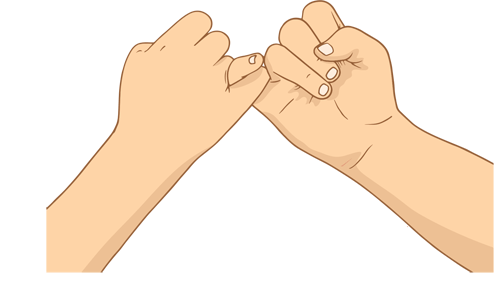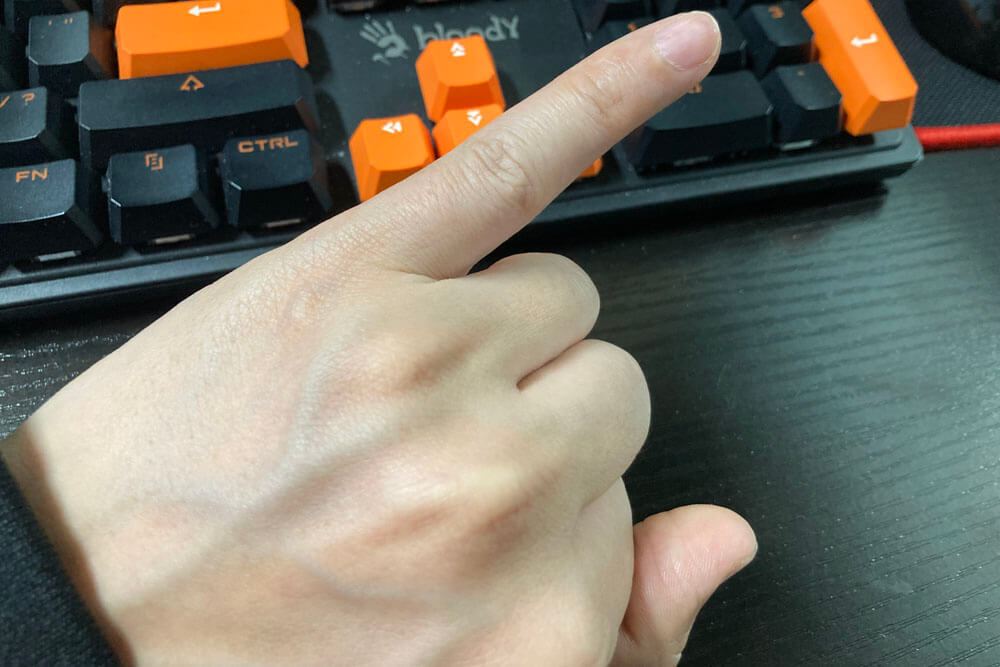Curiosi di conoscere i simboli culturali e i loro significati? Vi siete mai chiesti quale significato abbia il mignolo nella cultura cinese? Bene, preparatevi a immergervi nell'intrigante mondo del simbolismo cinese mentre esploriamo l'importanza misteriosa e spesso trascurata del mignolo nei costumi e nelle credenze cinesi.
Dai gesti di rispetto alle espressioni di status sociale, il mignolo gioca un ruolo sorprendentemente significativo in vari aspetti della società cinese. Scopriamo i significati nascosti dietro questo aspetto apparentemente piccolo ma culturalmente ricco della tradizione cinese.
Come chiamano letteralmente i cinesi le 5 dita?
In cinese mandarino, a ogni dito viene assegnato un nome specifico, che riflette la sua posizione e funzione. Ecco i nomi delle cinque dita con i rispettivi Pinyin e spiegazioni:
Pollice – pollice (mǔ zhǐ)
Il carattere 拇 (mǔ) significa “pollice” o “alluce”, indicando le sue dimensioni maggiori e la sua importanza per afferrare gli oggetti.
Dito Indice – 食指 (shí zhǐ)
Il termine 食 (shí) si riferisce a "mangiare" o "consumo", poiché questo dito è comunemente usato per indicare il cibo o indicare la direzione mentre si mangia.
Dito medio – 中指 (zhōng zhǐ)
中 (zhōng) si traduce in "medio", indicando che questo dito è posizionato centralmente tra le cinque dita.
Anulare – 无名指 (wú míng zhǐ)
无名 (wú míng) significa letteralmente "senza nome" o "anonimo", il che suggerisce che questo dito non è solitamente associato a una funzione o identità specifica.
Mignolo – 小指 (xiăo zhă)
小 (xiǎo) significa “piccolo”, evidenziando le dimensioni relativamente ridotte del mignolo rispetto agli altri.
Queste traduzioni letterali offrono una panoramica sia delle caratteristiche fisiche che delle associazioni culturali di ogni dito nella lingua e nella tradizione cinese.
Intento comune del mignolo in Cina
Sebbene in Cina il gesto del mignolo denoti comunemente una promessa o un impegno, la sua interpretazione può variare a seconda del contesto culturale e del modo in cui viene utilizzato.
Promessa
Nella cultura cinese, il gesto di alzare il mignolo, spesso definito "piccola promessa del mignolo" (拉钩承诺 – lā gōu chéng nuò), significa comunemente fare una promessa o un impegno, in particolare tra bambini o amici intimi. Quando gli individui intrecciano i loro mignoli, simboleggia un impegno sincero a mantenere una promessa o a rispettare un accordo. Questo gesto è profondamente radicato nella fiducia e nell'amicizia, e simboleggia un legame di lealtà e affidabilità.

Debole
Al contrario, in certi contesti, il mignolo può anche trasmettere un senso di debolezza o inferiorità. Questa interpretazione deriva dal concetto che il mignolo è il più piccolo e debole tra le cinque dita. Pertanto, usare il mignolo per gesticolare o enfatizzare un punto può essere percepito come indicativo di una mancanza di forza o autorità, portando ad associazioni con l'essere un "perdente" o inefficace in certe situazioni.
Gesti da evitare in Cina
In Cina, come in molte culture, certi gesti possono essere considerati offensivi, irrispettosi o ambigui. Per garantire interazioni fluide ed evitare di offendere involontariamente, è essenziale essere consapevoli dei seguenti gesti:
Indicare con l'indice
Indicare direttamente qualcuno o qualcosa con l'indice è considerato maleducato nella cultura cinese. Può essere interpretato come provocatorio o irrispettoso. Invece, è più appropriato fare un gesto con una mano aperta o usare l'intera mano per indicare la direzione.
Mostrare la pianta del piede
Similmente a molte culture asiatiche, mostrare la pianta del piede, intenzionalmente o meno, è considerato irrispettoso in Cina. È considerata una delle parti più basse del corpo e mostrarla a qualcuno, specialmente in un gesto come incrociare le gambe con la pianta rivolta verso un'altra persona, può essere offensivo.
Usare gesti eccessivi delle mani
Mentre alcuni gesti delle mani sono accettabili nella comunicazione cinese, movimenti delle mani eccessivi o esagerati possono essere visti come fonte di distrazione o insinceri. È meglio mantenere un livello moderato di gesti delle mani ed essere consapevoli delle norme culturali relative al linguaggio del corpo.
Dare o ricevere oggetti con una mano
Quando si danno o si ricevono oggetti, in Cina è consuetudine usare entrambe le mani in segno di rispetto e cortesia. Usare solo una mano può essere percepito come negligente o irrispettoso, in particolare quando si ha a che fare con persone anziane o in situazioni formali.
Prestando attenzione a questi gesti da evitare in Cina, i visitatori potranno gestire le differenze culturali in modo più efficace e garantire interazioni rispettose con la gente del posto.
Gesti cortesi e sicuri da usare in Cina
Quando si interagisce in Cina, usare gesti educati e sicuri può aiutare a promuovere una comunicazione positiva e dimostrare rispetto per i costumi e le tradizioni cinesi. Ecco alcuni gesti ampiamente accettati e apprezzati:
- Offrire e ricevere oggetti con entrambe le mani: Quando si danno o si ricevono oggetti, usare entrambe le mani in segno di rispetto e cortesia. Questo gesto mostra sincerità e riconosce l'importanza dello scambio.
- Annuendo e inchinandosi leggermente: Un cenno del capo o un leggero inchino possono essere usati per mostrare rispetto, gratitudine o accordo nella cultura cinese. È un modo semplice ma efficace per trasmettere cortesia e riconoscimento.
- Usare gesti a mano aperta: Invece di puntare con l'indice, usa una mano aperta o gesticola con tutta la mano per indicare la direzione o fare un punto. Questo è visto come più cortese e meno conflittuale nella comunicazione cinese.
- Sorridente: Un sorriso genuino è universalmente apprezzato e può aiutare a creare un'atmosfera positiva in qualsiasi interazione. Sorridere è particolarmente importante nella cultura cinese in quanto segnala cordialità e accessibilità.
- Dare una leggera stretta di mano: Quando saluti qualcuno, offri una stretta di mano gentile con un leggero inchino della testa in segno di rispetto. Mantieni la stretta di mano ferma ma non troppo forte e mantieni il contatto visivo per trasmettere sincerità.
- Usare un linguaggio del corpo modesto: Nella cultura cinese, la modestia è apprezzata, quindi evita gesti delle mani eccessivi o un linguaggio del corpo eccessivamente espressivo. Invece, mantieni un atteggiamento calmo e composto e sii consapevole dei confini dello spazio personale.
- Esprimere gratitudine: Dire "xièxiè" (谢谢) o "grazie" in cinese mandarino è un gesto semplice ma importante per mostrare apprezzamento. Abbinalo a un leggero inchino o cenno del capo per esprimere sincerità.
Incorporando questi gesti cortesi e sicuri nelle tue interazioni in Cina, puoi districarti tra le differenze culturali con facilità e dimostrare rispetto per le usanze e l'etichetta cinese.
Come Jinyu può aiutare
In quanto Jinyu Translation, la nostra competenza nella lingua e nella cultura cinese può offrire un valido aiuto in vari modi:
1. Guida turistica locale: quando si viaggia in Cina, orientarsi tra le usanze, le attrazioni e i servizi locali può essere impegnativo per chi non è madrelingua. I nostri servizi di traduzione possono fornire guide turistiche complete, offrendo approfondimenti sulle destinazioni imperdibili, etichette culturali e consigli pratici per un'esperienza di viaggio arricchente. Che si tratti di consigliare gemme nascoste, spiegare siti storici o facilitare le interazioni con la gente del posto, le nostre guide assicurano un viaggio fluido e coinvolgente.
2. Aiuto per la comunicazione formale e informale: una comunicazione efficace è essenziale sia in contesti formali che informali. I nostri servizi di traduzione soddisfano diverse esigenze di comunicazione, che tu stia conducendo trattative commerciali, partecipando a eventi formali o impegnandoti in conversazioni informali. Offriamo traduzioni accurate di documenti, presentazioni e discorsi, assicurando chiarezza e professionalità nelle tue interazioni. Inoltre, i nostri esperti linguistici possono fornire coaching linguistico informale, aiutandoti a padroneggiare espressioni colloquiali, slang e sfumature conversazionali per una comunicazione più autentica con la gente del posto.
Grazie alla nostra competenza nella traduzione Jinyu, sia i viaggiatori che le aziende possono superare le barriere linguistiche con sicurezza, favorendo connessioni significative e migliorando le proprie esperienze in Cina.

